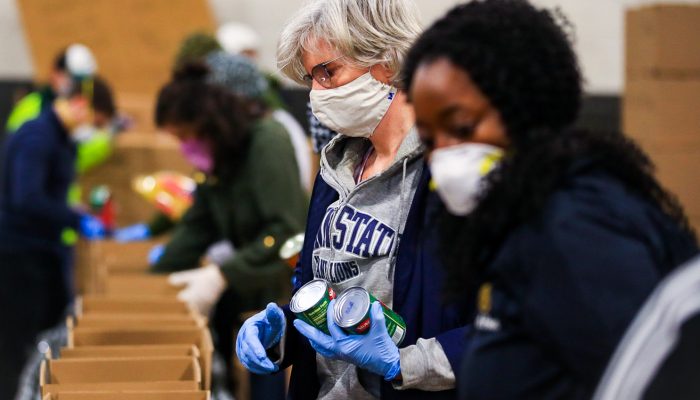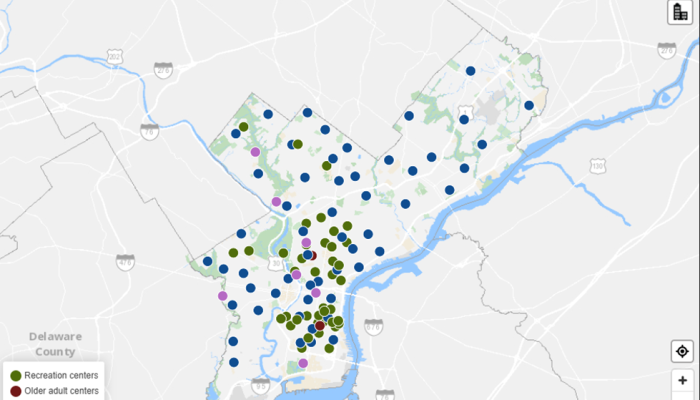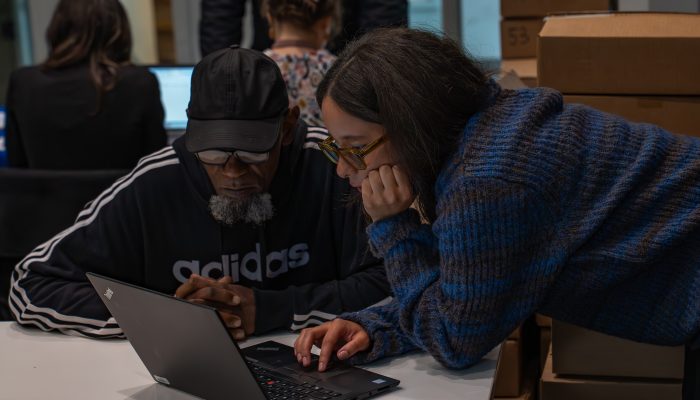As schools and businesses shut down to stop the spread of COVID-19, many Philadelphia residents lost access to meals and food. The City of Philadelphia and partners worked proactively to increase food access for Philadelphians, despite the challenges of this crisis.
Food distribution sites opened quickly across Philadelphia—including meal sites for students and seniors, food sites distributing boxes of food to households, and temporary outdoor meal sites designed for residents facing homelessness.
A quick response
Student meals sites were the first to launch, and the City promoted the program through a blog post—one that generated significant traffic, underscoring the need among residents. As the weeks progressed, the City announced more free food programs, additional locations, and new partners. These new sites went onto maps created by the Office of Emergency Management. For accessibility, every piece of new content was translated into multiple languages.
The City’s rapid response meant that thousands of Philadelphians had access to food despite school and business closures. However, due to the ever-changing situation, the blog posts and maps required a lot of maintenance. In addition, the different food programs were outlined in different blog posts and different maps, making it difficult for residents to fully understand all of their food access options.
How could we make this information easy to access and easy to maintain during a crisis? How could we organize all of this information in one place to make sure that residents can quickly locate a meal site near them?
Enter: our incredible digital transformation team.
An easy, up-to-date resource for residents
Our digital transformation team transformed the food access information into an application using an existing platform: the resource finder. The resource finder is built on a reusable and open-source custom framework called pinboard which allowed the team to quickly create the application for the food sites. Working closely with the Office of Emergency Management, the digital transformation team combined the food site data into a single source that the application now uses.
The Food Finder is available in many languages, thanks to timely support from the Office of Immigrant Affairs (translations were completed in just under 24 hours, right before the application’s launch).
The Food Finder illustrates the benefits of collaboration across City departments and within teams as well. Our digital transformation team includes individuals who specialize in user experience, content strategy, and software engineering. The user experience employees understood the many variables that could affect service at the food sites—from holiday closures to weather. The content strategy team helped create concise, direct language that is easy to understand and easy to translate, while the software engineers developed the actual application and brought it to life.
If the digital transformation team hadn’t been in the key conversations surrounding COVID-19, we may not have seen the opportunity to offer this information to residents in an easy, accessible way. By combining the talents of the user experience, content strategy, data management, and software engineering groups, the City was able to launch a map-based food distribution application.
We’re proud of this team effort and the final product. The Food Finder has helped us think about new ways to use our technology for sharing important information—and, most importantly, it’s helping Philadelphia residents find food during a hard and uncertain time.




